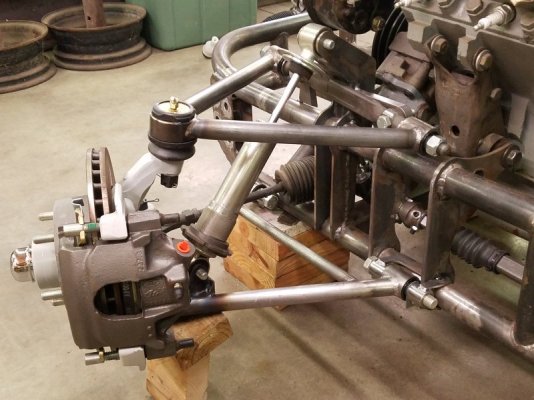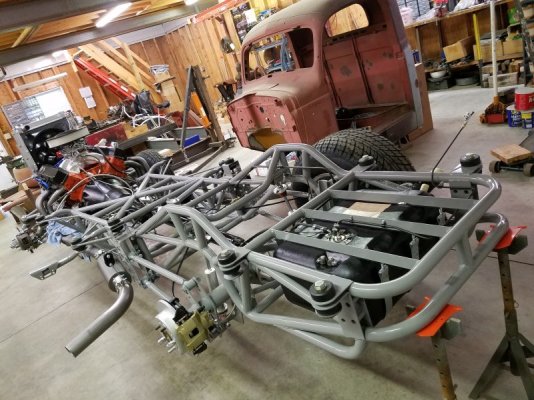On a related note for those on the sidelines, 4 wheel disc conversions are needed IMO only in these applications:
1. You are converting to 4 wheel ABS
2, You are racing, and only in some applications
3. you want to impress clueless friends
4. You want to spend money
Front Disc conversions are not included in this list.
If the desired results of switching to 4 wheel disc brakes
meets the criteria below, it's well worth the effort.
Chrysler was the first domestic automaker to offer four-wheel discs, and the year was 1949. Installed on a close
to 4 ton behemouth.
Advantages to a 4 wheel disc brake system
- Consistent Stopping Power: Disc brakes provide superior and consistent stopping power, especially in high-speed or heavy-duty applications, due to effective heat dissipation and reduced brake fade.
- Shorter Stopping Distance: Disc brakes are designed to provide shorter stopping distances, making them ideal for vehicles that require rapid deceleration, such as those used in off-road or emergency services.
- Improved Performance in Adverse Conditions: Disc brakes perform well in wet, muddy, or icy conditions, as the rotor’s surface area and the caliper’s design allow for better heat dissipation and reduced brake fade.
- Easier Maintenance and Service: Disc brakes are generally easier to service and maintain compared to drum brakes, with fewer components and simpler pad replacement procedures.
- Customization Options: As disc brakes are visible and aesthetically appealing, they offer customization options for vehicle appearance and performance enhancements.
- Better Suitability for High-Performance Vehicles: Disc brakes are commonly used in high-performance vehicles, as they provide the necessary stopping power and control for aggressive driving.
- Improved Safety: A 4-wheel disc brake system provides even braking performance across all four wheels, enhancing overall vehicle safety and stability, particularly in emergency braking situations.

This is on a custom built tube chassis where GVW is below
3100 lbs. The front calipers are from a Ford Granada, the
rears from a Jeep Wrangler. Definately not a kit.
Chassis was originally designed for the strip but
since changed course to street use. Chose the
Jeep rears due to the intrigal emergency brake.
2 lb residual check valves and a adjustable
propotioning valve to the rear. MC is from a 1985
Dodge Diplomat (1.032) bore, Chrysler Newport
dual diaphram booster. Brake fade near zero,
pedal feel is great. Flat, level, four wheel lock-up
under emergency braking.
I'll side with
@Kern Dog on this one. Almost
all manufacturers have gone to 4 wheel disc
systems for reasons afforementioned.
Many have made the conversion with satisfactory
results, which you try and define as a wasted effort.




















